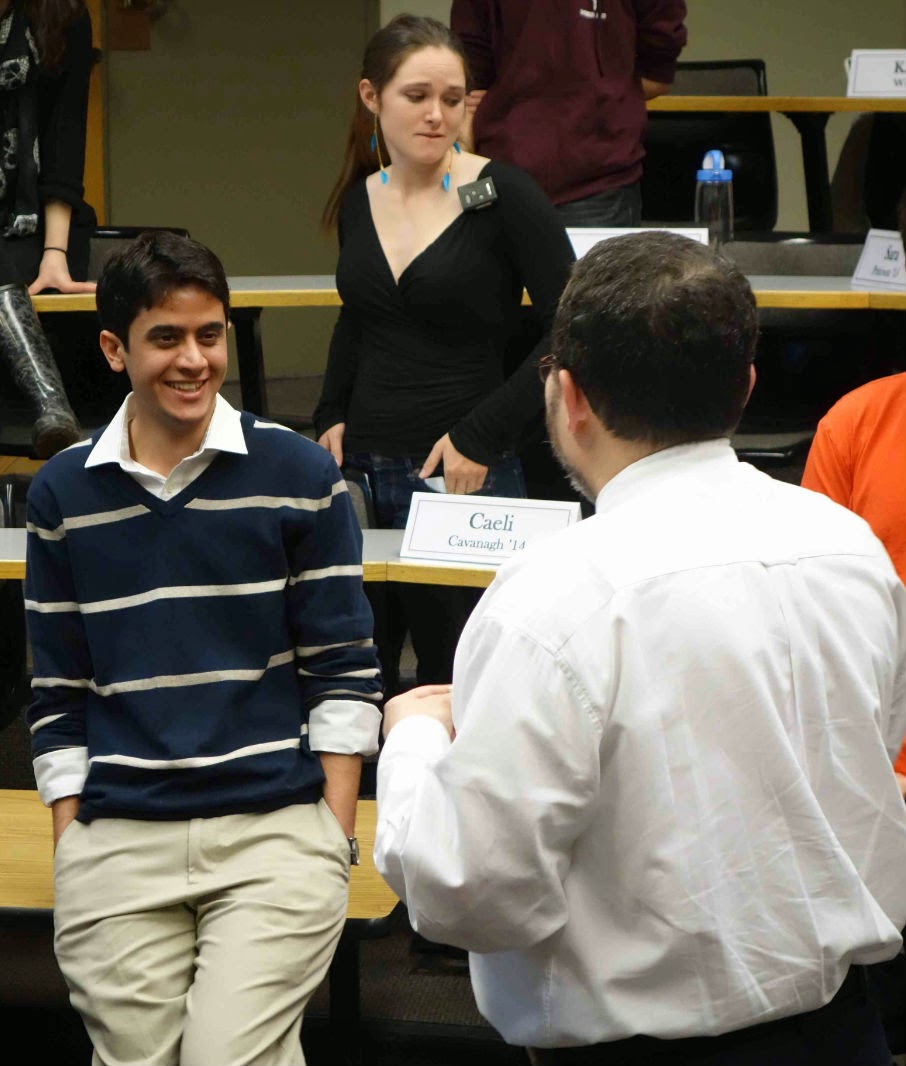- Public Policy
- Leadership
- Funding
- News & Events
- About the Center
Back to Top Nav
Back to Top Nav
Back to Top Nav
Back to Top Nav

On April 1, Gama Perruci, Ph.D., visited MLDP participants and conducted a session called "Leadership and Followership." We began the session with a brief discussion about traditional views of leadership. In particular, we analyzed a painting of George Washington crossing the Delaware River and debated how the characteristics of the painting made him stand out as a leader. To further develop our definition of leadership, we looked at the Rockefeller Center's definition of leadership, and, finally, discussed the differences between management, followership and leadership.
The second part of the session was an interactive activity around Robert Bellah's ideas about the leadership continuum. Bellah believed there are four types of leadership - those who are more focused on the individual aspect of leadership (utilitarian individualists such as Steve Jobs or expressive individualists like Lady Gaga), and those who are more focused on the community they are helping to lead (leaders of the republican strand like Gandhi or leaders of the biblical strand like Mother Teresa). We sorted ourselves into four corners of the room depending on what sort of leader we believed ourselves to be (determined by why we chose to signup for MLDP).
I personally believed myself to be part of the republican strand, as I hoped to learn in MLDP how to be a better leader in order to build a more cooperative community. As we debated among groups what defined each of our groups, we found that, for the large part, we were only separated by small differences. For instance, although one's motivations may be different - improving peoples lives vs. personal success - these can both play into the same end goal, like effectively managing a company. I found this message quite powerful, because it gives hope that although not everyone may identify themselves as the same type of leader, we can all ultimately still make a positive difference in the world.
I can see myself applying this knowledge in many different situations, both in the present and in the future. Collaborating in groups, whether socially or in the workplace, can be challenging. Diversity enriches all of our lives, but also means that we come from a variety of backgrounds and experiences. However, Perruci’s seminar made me realize that the key to working together is not emphasizing our differences, but rather, finding what we all have in common.
-- Meg Parson '16, MLDP Spring 2014 Participant